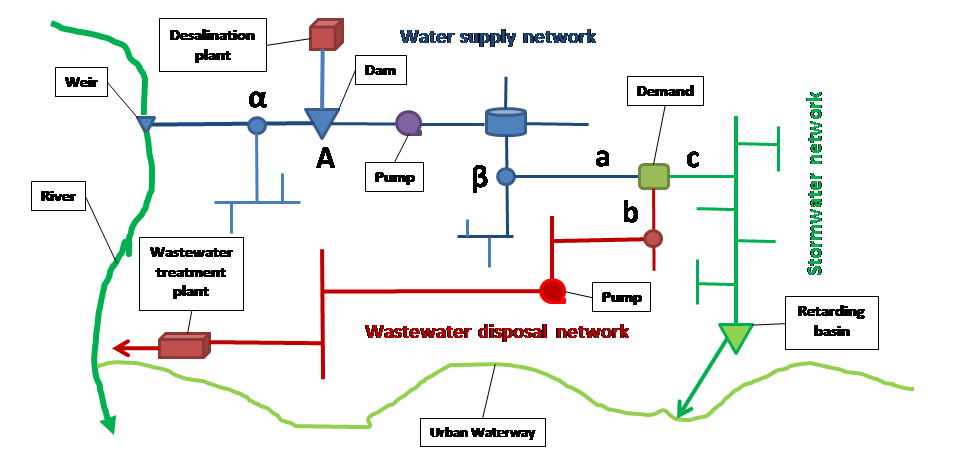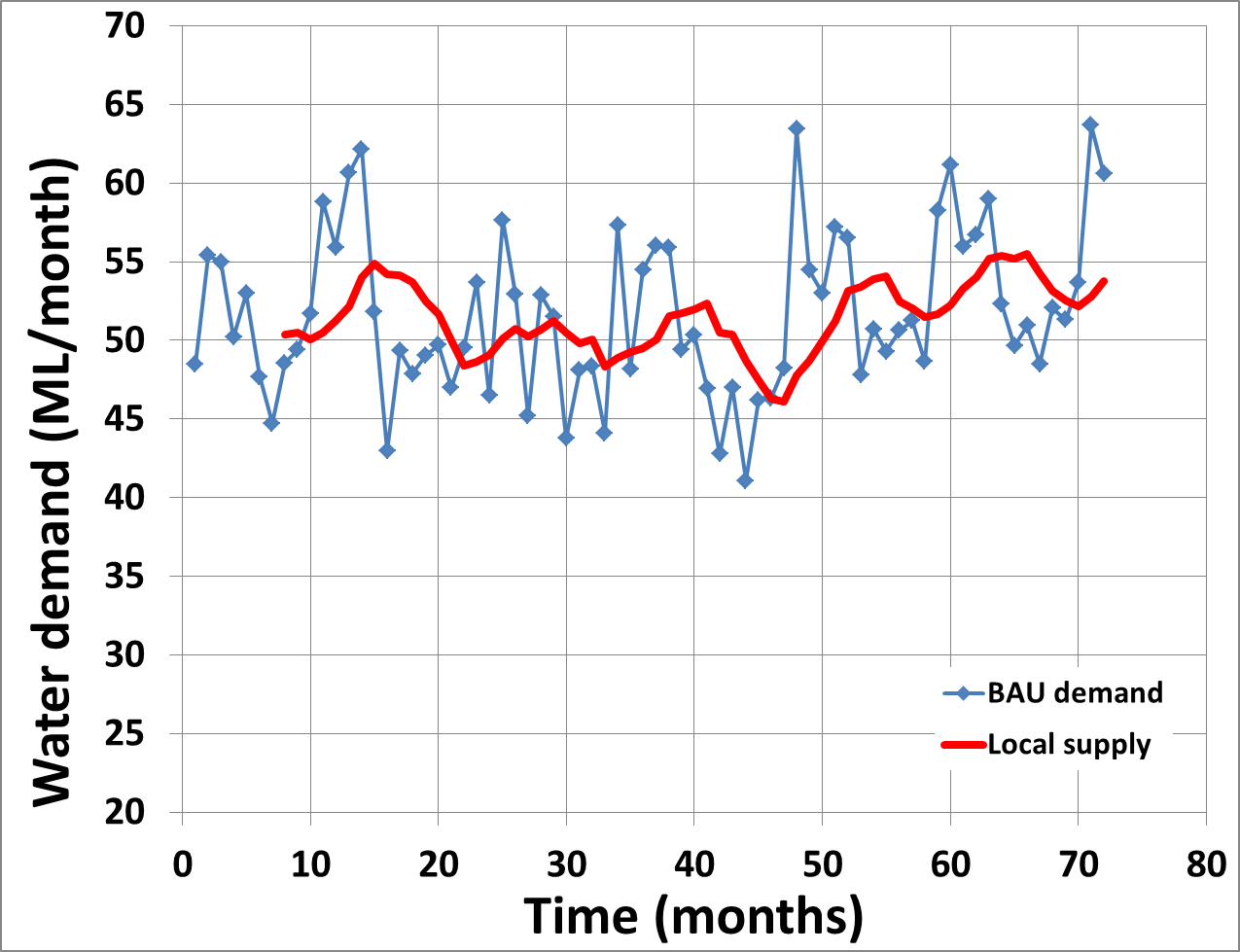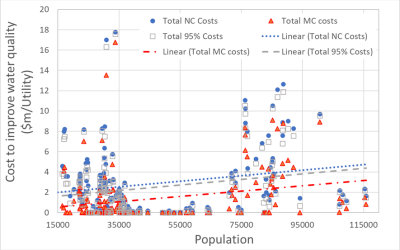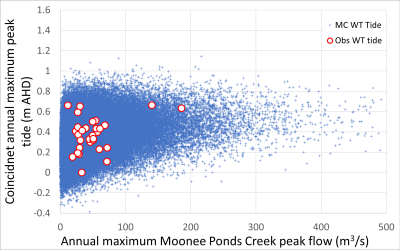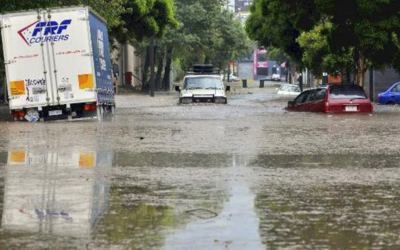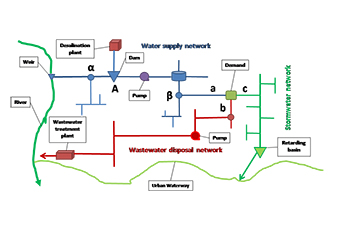
An important challenge is presented by generalised equilibrium models for economics that are reliant on average assumptions and judgements as inputs, and the processes are necessarily simplified into supply and demand approximations. As a consequence, economic optimisation relates to the high level assumptions and model approximations rather than the transactions throughout the society.
As outlined by many authors, a society (a market) involves multiple transactions or decisions that occur at multiple scales. Whilst educated empirical input assumptions and process approximations about simplified supply and demand processes can be reasonably approximated for known static systems – these processes cannot replicate the multiple transactions within a system (for example with respect to intersection of a water cycle with town planning processes) – and, therefore, cannot understand or value a system that changes from the smallest distributed scales (from the bottom up)
It also follows that these traditional economic processes cannot evaluate distributed processes because a small proportion of the available Big Data may be generalised as whole of system average inputs – thus the signals of distributed changes are smoothed or completely lost by partial use of data – thus there is no direct and timely mechanism to capture the changes in the transactions or decisions throughout society. The use of Systems Frameworks of Big Data to evaluate Systems Economics is an emerging future – this is the basis of the Systems Framework.
The collaboration of Professor Alex Coram in developing this discussion is gratefully acknowledged.
A Framework for Systems analysis must have an appropriate structure for analysis of policy and the output information provided must be able to:
- fully reveal the most important and policy relevant features of the water cycle system
- encourage thinking about the possibilities for innovation and improvement at every scale and level
- provide an economically rigorous analysis
- allow decisions to be based on clear cost benefit comparisons of alternative options
- provide data that is completely transparent and does not obscure or hide any relevant economic input
- provide data that does not artificially restrict the available options
- provide data that does not bias the decision making process towards any particular set of alternatives
In addition to facilitating economic assessment and planning the information provided should also be helpful in meeting such goals as: providing incentives for innovation; monitoring and publishing the performance of water agencies; improving information provision to the community and; helping people understand the real cost of water cycle management.
The systems approach simulates the water system as a network of interlinked natural inputs and produced storage, transfer, and processing facilities. This Framework is designed to capture the most important characteristics of this network. Some of these are:
- networks of water supply, wastewater disposal and stormwater management that are stock-flow transport networks
- these networks have spatial and temporal connections between all their elements
- these networks have strong dependent links with society including via town planning processes
- in the short term the water supply infrastructure is a fixed common pool resource
- moving water and wastewater along linkages and between nodes in the network has a cost
- the costs of providing water, disposing of wastewater and stormwater runoff will vary at different spatial locations and times
- water consumption, wastewater disposal and stormwater runoff at any one point in the network will, almost always, have economic consequences at all other points
- there are linkages between the different functions in the system since wastewater is not independent of water usage and stormwater is not independent of storage or capture
- water supply, wastewater disposal and stormwater runoff has economic effects outside the network and these typically extend across a large geographical area
For a simple example, consider the networks in Figure 1. It is obvious that an input, or extraction at any point α or β, or an increase in the holdings of a reservoir, say at A, will have some influence on flows and capacities at all other points in the system. These will, in turn, translate into changes in the costs of provision and disposal, across the network. Similarly, changes in behaviour (demand) at any point in the system will generate different impacts a, b and c on the water, wastewater and stormwater networks respectively. The changed impacts (a, b and c) will translate and accumulate throughout the different cascading scales across the networks.
This approach has been developed in a series of scientistic and policy publications. It is also set out in the Living Melbourne, Living Victoria: Greater Melbourne Systems Model report to the Ministerial Advisory Council of January 2012.
Economic simulation using the systems approach
The Systems Framework links physical and financial processes throughout systems (such as the water cycle for Melbourne) that may include values to storage, consumption, transfers, stormwater processing and similar at each point in the network. This allows understanding of the costs and benefits that accumulate throughout the water cycle system. It is able to adjust these values in response to changes in parameters such as rainwater capture, or the probabilities assigned to weather events and variations in economic markets. This allows the Systems Framework to be used to test a wide range of different options and scenarios. The further development of this disaggregated information is the main economic contribution of the Systems Framework as a decision tool.
The Systems Framework is necessary to meet the information conditions required for properly costed policies. A meaningful economic analysis cannot be constructed by aggregating inputs and outputs. There is emerging acceptance of this insight in a variety of publications including from the Productivity Commission.
It follows from this that the economic analysis for informed policy will have to be built from a constructive application of our standard theoretical tools in ways that go beyond normal market theory. These tools include our existing theories on externalities, club goods, game theory and mechanism design. It is only by using these in conjunction with spatial information about local costs, network links and water flows that we will be able to design the incentive structures necessary for efficiency and to drive innovation and change.
For example, if we wish to design an incentive structure for a water agency at some point, α, we need to understand linked and dependent costs and inputs of that point in the system. In order to avoid perverse incentives, we also need to understand the effect of a change in the behaviour of this agency will have elsewhere in the system. For example, a simple goal of revenue maximisation or cost recovery may cause the retailer at α to encourage greater water use in order to get a greater return on the value of its infrastructure. This may impose costs at other points that are greater than the benefits obtained locally.
Secondly, differences in costs across the network create an extensive and complex set of different opportunities for innovation and savings. This range of opportunities is much greater than would be found in a more homogeneous system. This approach allows exploitation of many opportunities for overall improvement through optimisation across multiple scales (local to regional) that this provides.
Use of these opportunities to maximize total economic benefits (or utility) must include mechanisms to make comparisons between policies at various points. For example, consider a policy of infrastructure improvement at two different points, α and β. Even if the costs of the projects are the same at each point, the economic benefits may differ significantly. It may be the case that α is closer to a stormwater sink than β, for example, and hence an improvement in stormwater treatment at α may only have a local benefit. A similar improvement in β may bring about a much greater reduction in costs. Similarly the installation of a rainwater tank may have a much different economic impact at different points in the network because of the reduction in water delivery costs and the costs of treating stormwater runoff differ across the network.
In a similar manner the option of working with consumers, such as business, to reduce water delivery costs and use is critically dependent on adequate costs and incentives using local data and on network wide impacts.
Other complications also increase information demands on policy makers and the need for localized economic data. Among these issues is that the cost of delivering water to a point and the costs of treating wastewater or stormwater at the same point may not be correlated. For example point α may be close to a wastewater treatment facility and have lower wastewater costs but water for consumption at α may require transport over longer distances or extensive treatment.
Thirdly spatially refined data are necessary to maximize the scope for innovation by ensuring that all options and their implications are properly considered. If policy information is only provided at the aggregate level many options are precluded from consideration, regardless of the magnitude of the economic benefits they might provide.
The reason for discontinuities in information is that, because of the engineering and economic aspects of the network, the information available for policy makers is different at different spatial and temporal scales. In more formal terms, the system is not linear and it is not uniformly divisible. This means that the characteristics of a 1/n part of the network cannot be obtained by dividing the characteristics of the network by 1/n.
This is a serious problem with existing aggregative approaches since it violates the conditions required for finding optimal outcomes. For example, if the set of policy options is restricted as in Figure 2, there is no reason why the restricted set should include the policy that is optimal for the entire system.
As an example, consider small local innovations of the sort that may be driven by providing consumers with an appropriate structure of incentives. A case here is a change in adoption of rainwater harvesting. If we only have average data on water demands across the whole region, these changes may only have a minimal impact on the percentage of water used and be left out of the list of options. If we have properly structured information on local flows, costs, the damage created by stormwater runoff and so on the total economic value may turn out to be significant.
Not only are options excluded by not having spatially refined data but there is a systematic bias away from local solutions and innovation towards large capital expenditures because of their impact on average data. This is inconsistent with the goals of having a resilient water cycle system.
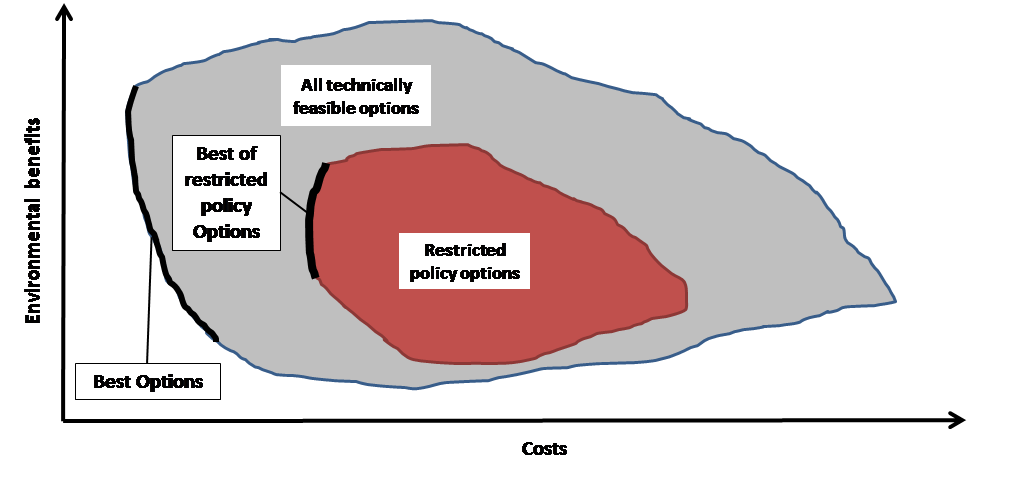
Figure 2: Conceptual diagram of policy options under aggregate data as a subset of the larger set of options
Risk management also produces demands for information and is of major concern for water management. Ensuring that storage, treatment, pumping and pipe capacities are adequate to meet the challenges of unusual events or to reduce the chances of failure below some nominated threshold is a significant driver of expenditure on infrastructure. These uncertainties are amplified by the potential instabilities that will be produced as climate change or population growth accelerates. There are two elements here.
- Supply side risk. This is the risk that supplies may not be adequate because of prolonged drought or because of greater than anticipated demand on the system.
- Risks of floods and property damage.
By definition, the characteristic of risk is that it is intermittent and, even if probabilities are known, the occurrence of the peak behaviour is not. In a general sense, either the form of risk is produced by variations of the sort given by the blue line in diagram 3. For illustration, assume we are only concerned with the peak behaviour.This diagram helps highlight the possible options. One way to ameliorate risk is to reduce expenditure on major capital works such as desalination plants or storage and pumping capacity. The aim here is to ensure that peak events only overwhelm the system with some acceptable probability. Much of this capacity will, of course, be in excess or requirements much of the time.
With sufficient information it will be possible to pursue the alternative of creating a more resilient system by using local storage and processing capacity. This has the potential of smoothing the peak behaviour as shown by the impacts of local supply – the red line in Figure 3. This will reduce the risk management related demand for capital expenditures.
An illustration of this is the impact of rainwater or stormwater harvesting. A consequence of this may be discontinuity in the timing of storm surges or might even be used to control them through social media to stagger the release of water in a coordinated way.

